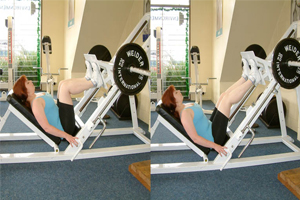 We seem to hear different things from the medical community every few years about either the positive or negative effect that coffee has on our health. So what is the most current information? Is coffee good or bad for your health? The answer, in short, is that it’s a little of both.
We seem to hear different things from the medical community every few years about either the positive or negative effect that coffee has on our health. So what is the most current information? Is coffee good or bad for your health? The answer, in short, is that it’s a little of both.
Too much coffee can lead to a temporary increase in blood pressure, anxiety and upset stomach, in addition to its ability to become addictive. And don’t forget that added cream and sugar contribute to weight gain. For example, a 24-ounce Starbucks venti double chocolate chip frappucino contains a mind-boggling 520 calories!
Despite these drawbacks, moderate coffee consumption can actually have a protective effect, helping to reduce your risk of many problems, including Parkinson’s disease, Alzheimer’s disease, liver cancer, gallstones and Type 2 diabetes, to name a few. It can also lower the risk of stroke in women.
Current research has indicated that there is no increased risk of heart disease or cancer from moderate coffee drinking. The studies done earlier that reached that conclusion were flawed in that they did not take into consideration other lifestyle habits that went along with increased coffee drinking, such as smoking and lack of exercise, two major causes of these diseases. In fact, coffee has been shown to protect against many kinds of cancer.
A recent study published in the journal Cancer Epidemiology, Biomarkers & Prevention found that there was a 25 percent reduction in cases of endometrial cancer in women who drank four or more cups of coffee per day. Scientists believe this may be due to the fact that coffee has the ability to lower concentrations of free estradiol and insulin, in addition to the cancer-fighting effect of coffee’s antioxidant phenols.
Even a few cups of coffee every day can cut men’s risk of developing prostate cancer by 30 percent, with those consuming six cups of coffee a day reducing their risk of a dangerous form of the cancer by a whopping 60 percent.
Coffee also reduces your risk of developing basal cell carcinoma by up to 20 percent, according to scientists from Brigham and Women’s Hospital and Harvard Medical School.
Another study published in the Archives of Internal Medicine found that women who drink coffee (four cups per day) have a 20 percent lower risk of depression than those who drink no coffee at all.
It is recommended that you get no more than 500-600 mg of caffeine intake per day, the equivalent of about 6 to 8 cups of brewed coffee. Obviously, the amount of caffeine in a cup of espresso will be more than that in the equivalent amount drip coffee.
The key point to keep in mind is to consume coffee in moderate amounts, especially if you are pregnant. But all in all, the benefits of coffee consumption far outweigh the risks for most people, so grab a café grande and drink up!
Nutrition is a very complex and our understanding of it is constantly evolving. If you have questions about your current nutrition or supplement plan, please ask. We are here to help!




























































